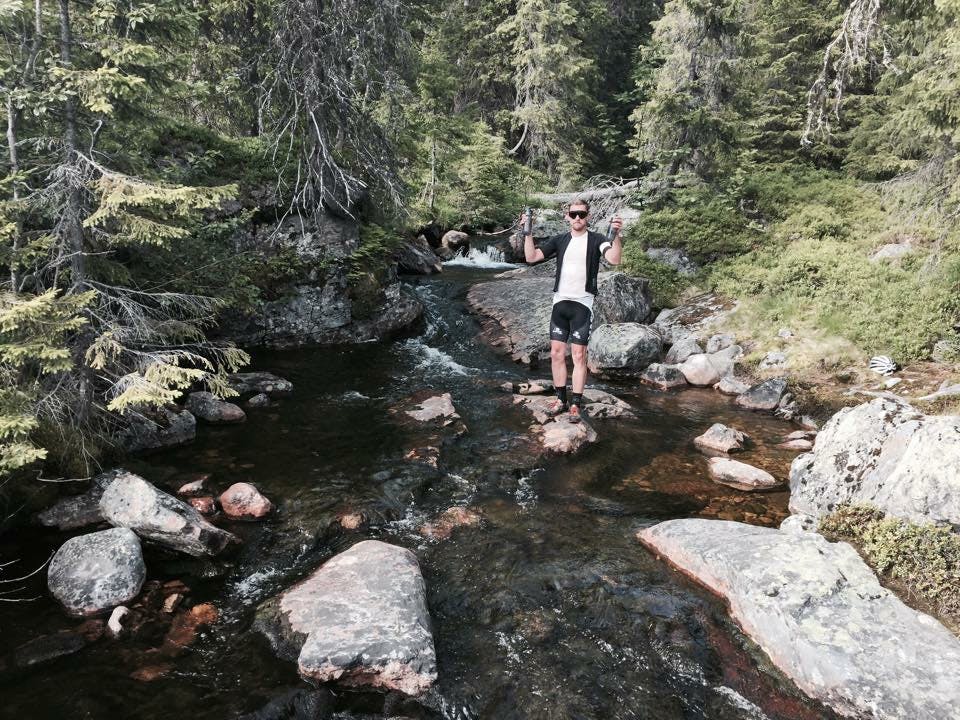Into the woods
Part of the beauty of Oslo as a bicycle city is the many possibilities for adventure and exploring what lies only an hour out of the city; Woods, mountains, lakes, streams and miles and miles of voluntary solitude. Here, Marius Nilsen talks about sleeping under the stars, the feeling of freedom and how getting out to the woods is probably easier than you might have imagined.

Text: Silje Strømmen
Photos: Marius Nilsen
Bicycling for miles into unknown woodland after work, and as darkness falls, pitch a campsite and sleep under the stars before waking up at dawn, pedal back to the city and go straight into the office, might sound extreme. However, the beauty of a mid-week getaway and watching at sun set – not because you have actively sought it out, but because it is simply just there, is priceless - and according to Marius Nilsen, it’s less of a hassle than you might think.
He talks about the subject passionately, cutting straight to the chase: often his friends and fellow bike enthusiasts don’t see the point of what he is doing. They make fun of it, call it “extreme“ and make jokes about man against nature and about being hip, or even elitist. For him, it’s about exploring what’s around the corner or on the other side of a hill, rather than just biking to get from A to B. It’s about the fact that when it is 4.45 PM, freezing cold and raining, you have the possibility of packing up and going home, but somehow you always choose not to.
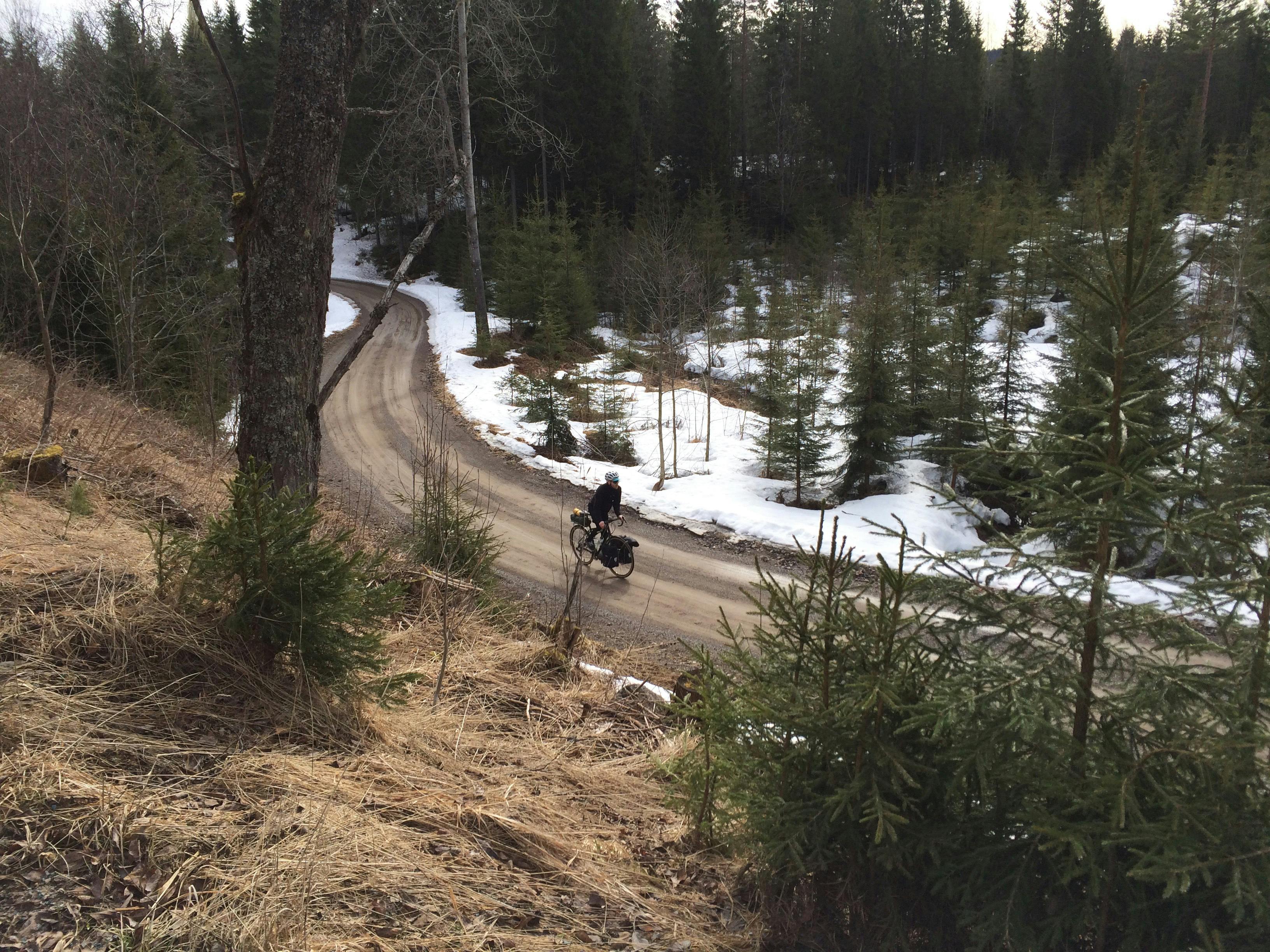
This is bicycle camping explained.
- Last spring and summer there was a lot of “sitting at the office on a Wednesday, checking the weather and seeing that it will be sunny all weekend and sending out a message to the gang about who wants to join”, Marius explains, before admitting that “the gang” usually extends to himself and a small group of friend with the same mindset.
- Finding someone to ride with is not that hard, but that person also has to be someone who you won’t mind spending 12 hours on a bike with, and who doesn’t mind getting up at 5.30 in the morning to watch the sunrise or make coffee.
Last season Marius had a bag with most of the essentials ready and packed by the door at all times, just in case he would get home from work and feel the need to go for a quick ride and spend the night under the stars. Other times the rides takes place over the weekend and extends to several days. After years of riding around in the woods just outside of Oslo, Marius and his friends has mapped out the best camping spots, and with the advantage of sleeping in hammock tents they can be confident that other campers won’t already have occupied them. How? The guys pack hammocks and set up camp in slopes, or of rocky grounds, where no one else would dream about setting up a tent. Other times, finding the perfect spot to set up is just a random accident.
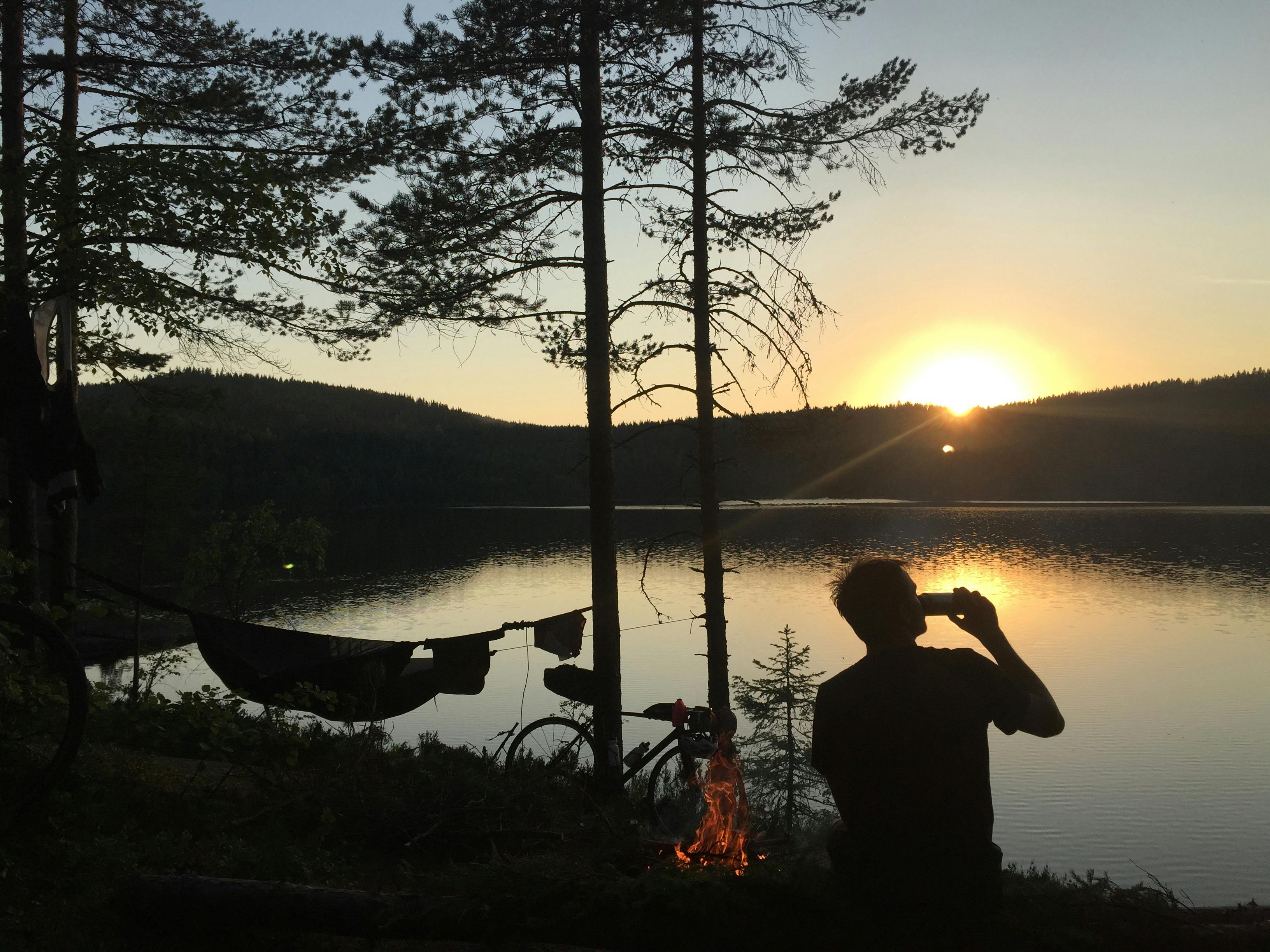
After setting up the camp, the rest of the night is spent making food, drinking various beverages and just hanging out, before going to bed early. If the location allows it, a swim before sundown is more than welcomed.
- It is all about that childish desire to explore. When you are out and about in the woods like this, you don’t exactly worry too much about the time. You find yourself in a different mindset than you would usually have been in when out riding a roadbike on your go-to trainingroute. Whether you have been riding for one hour or three is irrelevant. Instead, you go with the childish idea of wanting to discover what’s behind the next corner.
When enlisting non-cycling friends to join the trips, Marius’ usual arguments evolve around the distance and the simplicity of it. “Hey, you can even use your city bike” has been used as a selling point, just to illustrate the low threshold. It’s more about using the bike for transportation, rather than covering the biggest distance. Often the camp is set up only an hour or so outside of Oslo – and Marius highlights that you could just as easily take a ferry out to one of the many islets in the Oslo fjord and spend the night there instead. But then of course, you would have missed out on the fun of biking. It becomes more of a childish adventure.
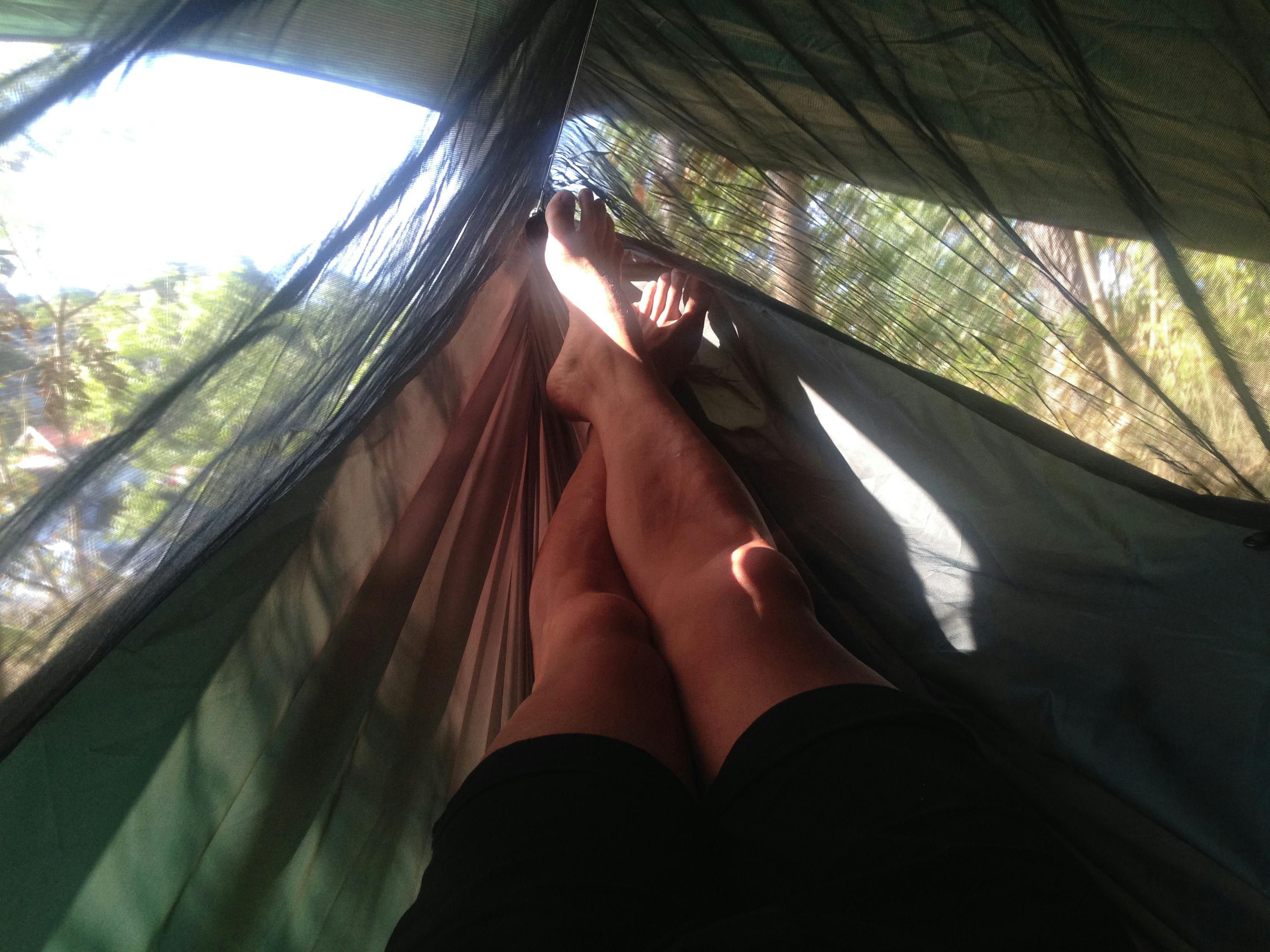
- I have always been riding a lot, and increasingly often on gravel forest roads. You get to a point where there is a limit as to how far you can ride in one afternoon after work. That was when the question of “how can I expand the experience” surfaced. That and of course getting inspired by people all over the world doing both small and big bikepacking adventures, through various social medias. We started playing with the new possibilities that would appear if we just packed up the necessities and headed out. Of course we had to cut back on some things, but also enjoy some fun gadgets that would make a trip enjoyable.
- When people ask me why I do this I answer “because it’s fun”. Then they go on to ask me “what’s so fun about it?” and I answer “because it is awesome”, and then I laugh. When we first started doing bike camping it felt magical to be able to wake up outside, ride back into the city, hit the shower, go for a coffee and still be at the office at 9 AM. It gives me so much energy, and it feels good to break out of the everyday routine. In addition, sleeping outside is for me personally a really nice way to tune out and relax. Sometimes I go to bed in the hammock, wake up at half past five, and lie there for an hour just watching the sunrise before rolling myself around and sleep for another hour. The rise itself isn’t always spectacular, but there is something refreshing and pure about “this morning I woke up outside and watched the sun rise”.
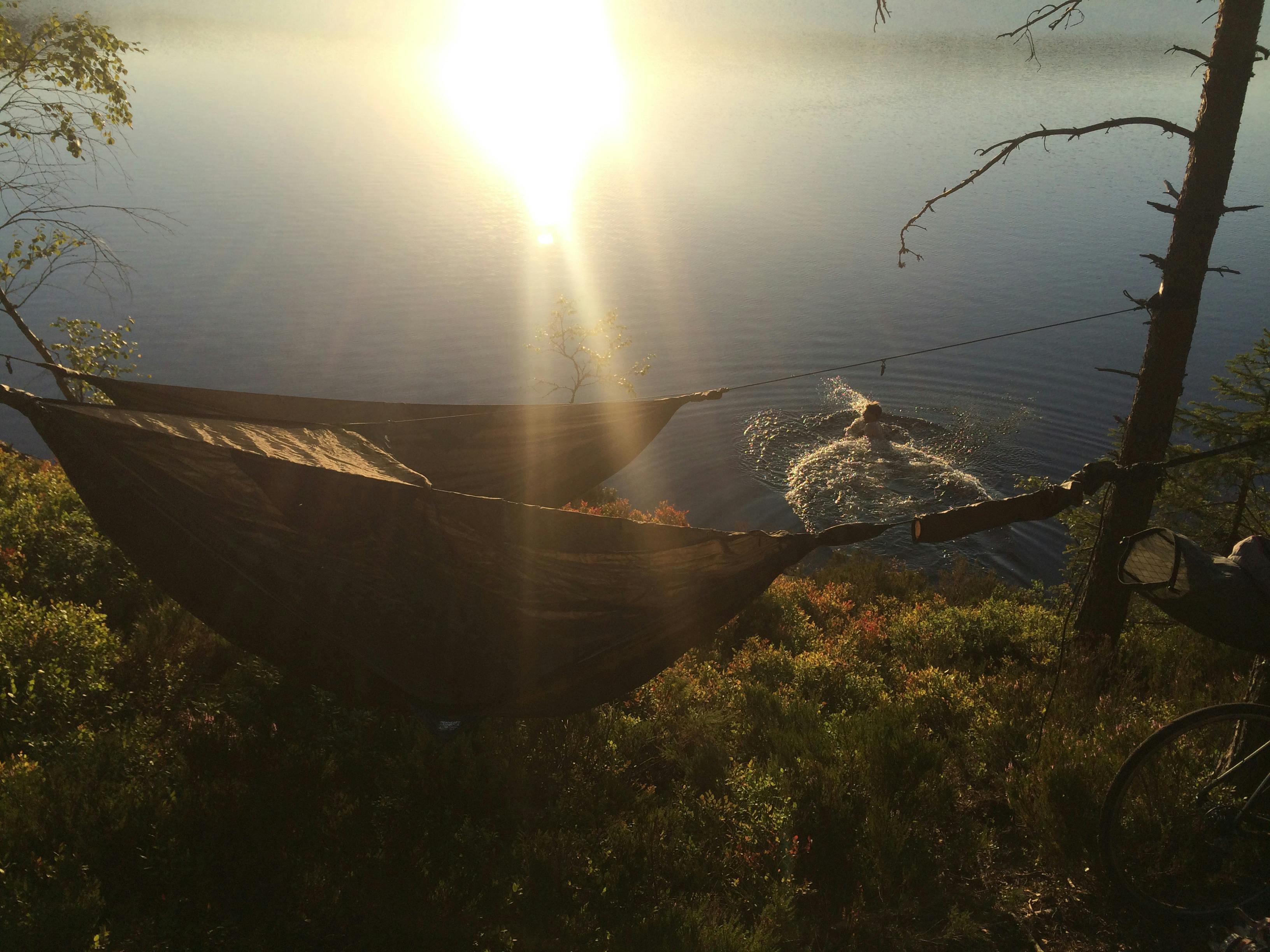
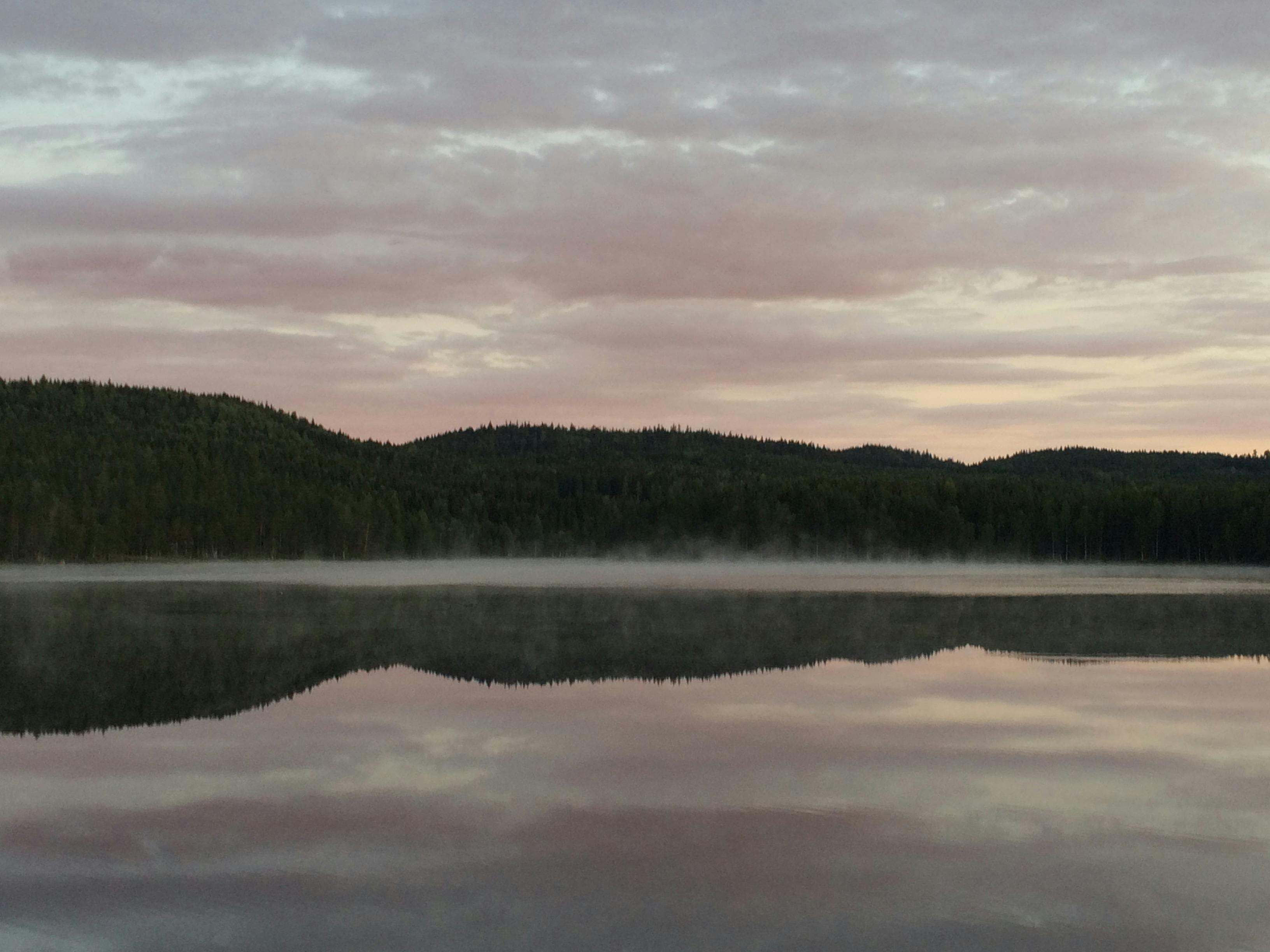
There is something so simple about it. Everyday life in the city is becoming increasingly more complex, and inherently more competitive and strategic. That’s why I think there is something so basic about sleeping in the woods and watching the sunrise. With much enthusiasm Marius explains how the last couple of years has changed his perspective on distance possibilities in terms of moving from one place to another.
To most people, riding 450 km in one or two days across Europe sounds like a crazy/extreme/stupid idea. But Marius’ point of view on that has changed into “well, it’s not that hard, it is possible to do that in 10 to 12 days”.
- As the years go on the distances increase and the intention of going on the craziest rides advances. Just now I’m planning a longer trip, which will take about three weeks to complete, if all goes well. Good planning and some happy accidents along the way is all it takes. You have everything you need with you, so if you get tired or hungry, you can just make a stop, whether it being from exhaustion or just bad weather. There is really no competition: you can just do whatever you put your mind to, and that’s what makes it feel so basic and absolute. Another genius part about it is that you suddenly view things differently and realise that you don’t necessarily need a car, a bus or a train to go somewhere. I’m visiting a friend in Italy this spring, and I have already been mapping out that it is 40 miles from Venice to where he lives. Which means that if I fly in early in the morning - I can ride through the Italian countryside during the day - and arrive with plenty of time to spare before sun down.
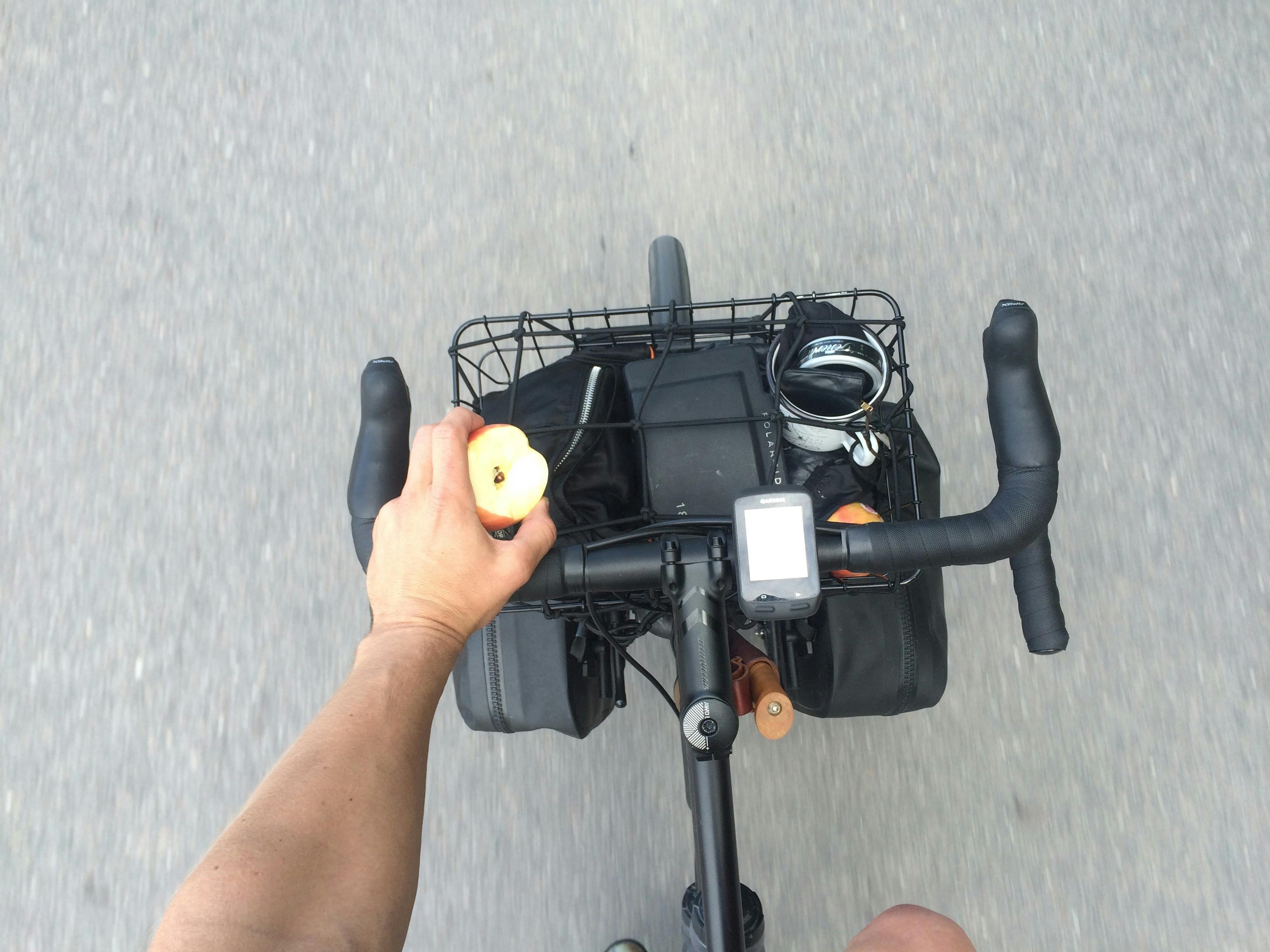
A few years ago I never would have thought that. Now, with the possibility of sounding overly enthusiastic, I really look forward to the whole journey getting there.
For more pictures, follow Marius on Instagram.
